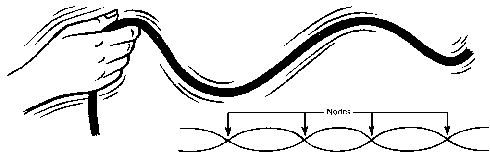The ES and SD figures give a measure of the internal ballistic consistency of the load.


Tight grouping at close range has more to do with the point in the harmonic vibration of the barrel the bullet leaves the bore.
At long range small difference in velocity can make large difference in elevation at the target, with corresponding sensitivity to wind.
At long range you need both a small group and small variance between shots in that group whereas in at short range it doesn't make much difference.
In other words and with the lapua 139 gr scenar as an example:
1000 yard drop @ 2700 fps = -347.7" windage: 82.7"
1000 yard drop @ 2750 fps = 332.9" windage: 80.2"
So at 1000 yards 50 fps extreme spread will result in 15" of vertical and 2.5" of horizontal random dispersion.
At 200 yards
200 yard drop @ 2700 fps = -3.9 drop windage 2.5"
200 yard drop @ 2750 fps = -3.7 drop windage 2.4"
At 200 yards the difference is 0.2" vertical and 0.1" horizontal.
So a load that leaves the barrel at a node in the firing cycle may be very accurate at short range.
Similarly a load which doesn't may have very consistent internal ballistics.
"An infinite number of monkeys banging away at type writers for an infinite period of time will eventually reproduce Hamlet" Thanks to discussion forums we now know this to be untrue.








 Reply With Quote
Reply With Quote